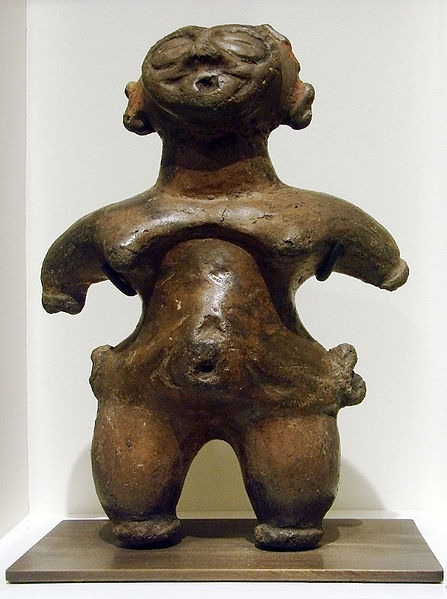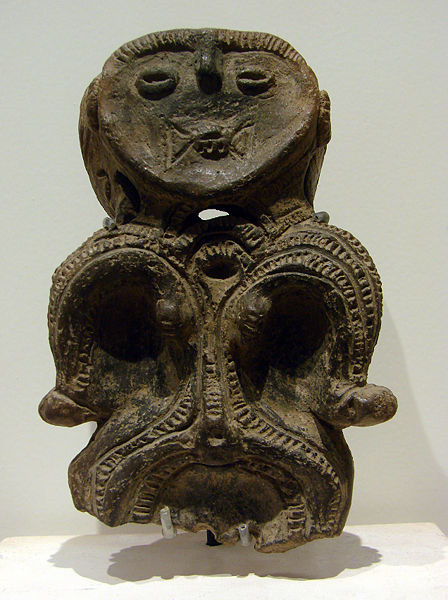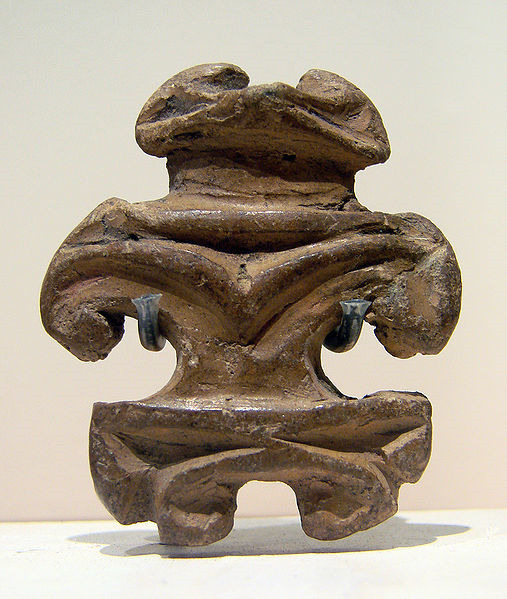I wrote some time ago about the ancient Jomon ceramic vases, with their surface decorations made with a twisted rope.
However, the Dogū figurines, from the same period are a lot more interesting, and the ones with humanoid shapes are fascinating! I had the opportunity to see some of them at the Tokyo National Museum.
In time, about 18,000 Dogū figurines were discovered, of various sizes and having an estimated age between 13,000 and 2,300 years.
A Dogū figurine is usually a stylized human shape, very expressive, with large heads, compact body and small members.
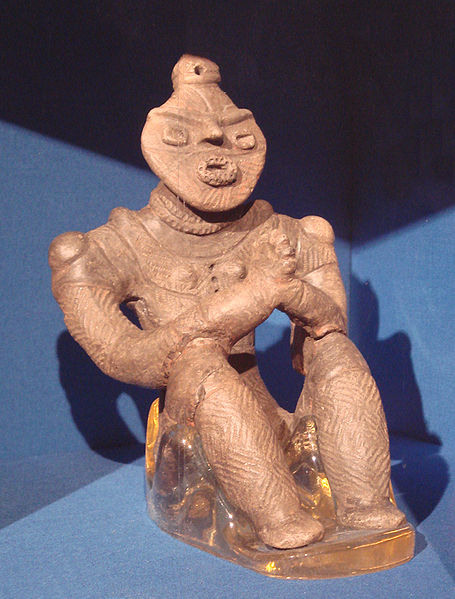 Jomon Dogū Statue - Dogu with Palms Together, image via Wikipedia
Jomon Dogū Statue - Dogu with Palms Together, image via WikipediaNobody knows for sure what was their initial signification…
About the Dogū representing women with large breasts and hips, it is believed that they were representations of fertility goddesses and were used in shamanic rituals. Other figurines, representing pregnant women, were probably talismans for safe childbirth.
Many figurines were found broken or with some parts cut away, so it is believed that those were used in healing rituals. It seems that there was a belief, that the disease could be transferred in the Dogū, which was then broken, thus healing the patient.
However, some Dogū have certain features that were not explained in any way, like those called “horned-owl”, those with hearth-shaped faces ("heart shaped” or “crescent-shaped eyebrow")…
… or the “goggle-eyed” Dogū:
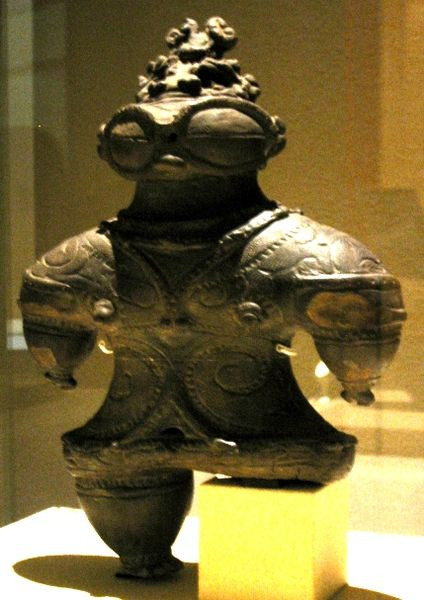 Shakōkidogū, Jomon Dogū Statue, image via Wikipedia
Shakōkidogū, Jomon Dogū Statue, image via WikipediaAlso unknown remains the significance of the decorations that adorn the clothing. Some of them are represented wearing masks, some wear armors and some seems to be wearing… a space suit!
But perhaps our imagination is too rich and many of them were simply ornamental objects or… why not, toys for children…:)
Am mai scris despre vasele de ceramică din perioada Jomon, cu decoraţiile făcute cu sfoară răsucită.
Figurinele Dogū din aceeaşi perioadă sunt mult mai interesante, în special cele de formă umanoidă, care mă fascinează. Am avut ocazia să văd câteva dintre ele la Tokyo National Museum.
S-au găsit aproximatv 18.000 de astfel de statuete, de diferite mărimi, cu vechime între 13.000 si 2.300 de ani. Statuetele Dogū au forme stilizate, capul mare, trupul compact şi membrele mici, iar multe dintre ele sunt foarte expresive.
 Jomon Dogū Statue - Dogu with Palms Together, image via Wikipedia
Jomon Dogū Statue - Dogu with Palms Together, image via WikipediaFiind atât de vechi, nu se mai cunoaşte care a fost semnificaţia lor.
Despre figurinele care înfăţişează femei, cu sâni mari, talie subţire şi şolduri late, se crede că erau reprezentarea zeiţei fertilităţii şi că erau folosite în ritualuri şamanice. Altele, care reprezintă femei gravide, probabil că erau talismane pentru naştere usoară.
Multe dintre figurine au fost găsite sparte, cu bucăţi lipsă, care par tăiate, iar despre acestea se crede ca au fost folosite în ritualuri legate de vindecare. Exista credinţa că boala putea fi transferată în statuetă, care apoi era spartă şi astfel bolnavul se vindeca.
Însă unele dintre ele au anumite trăsături la care nu s-a găsit nicio explicaţie, ca cele de tipul “horned-owl“, cele cu faţa în formă de inimă (“heart shaped” sau “crescent-shaped eyebrow”)…
… sau cele de tip “goggle-eyed” (cu ochelari de protecţie).
 Shakōkidogū, Jomon Dogū Statue, image via Wikipedia
Shakōkidogū, Jomon Dogū Statue, image via WikipediaNici semnificaţia decoraţiilor de pe costume nu este cunoscută. Unele dintre statuete poartă măşti, altele par să poarte un fel de armură sau… un costum de astronaut?
Dar poate că imaginaţia noastră este mult prea bogată şi multe dintre ele erau simple obiecte ornamentale sau… de ce nu, jucării pentru copii.


